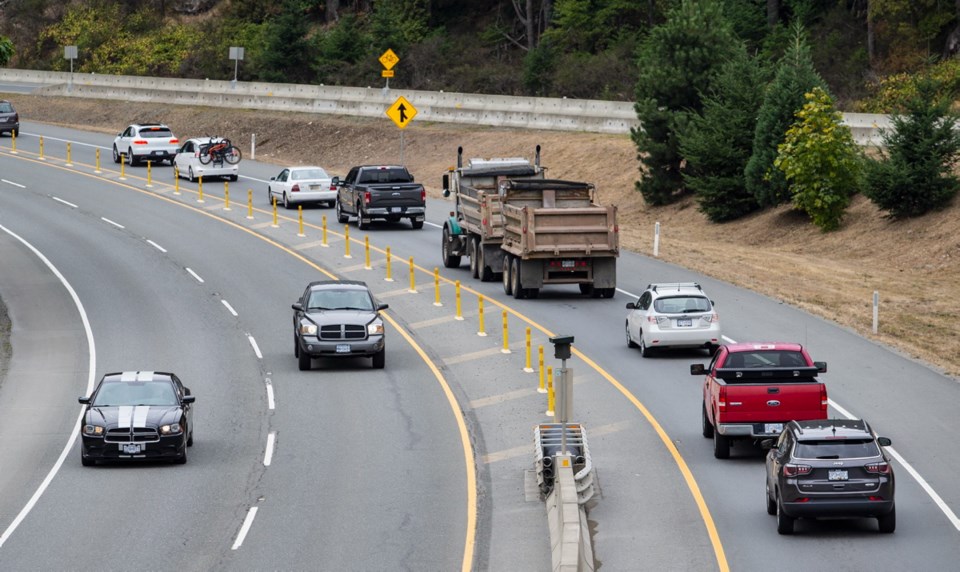A commentary by the executive director of the Victoria Transport Policy Institute, an independent consulting firm, and a member of Cities for Everyone, which advocates for more-affordable transportation and housing options.
Some people complain that new transportation planning practices, such as bike and bus lanes, traffic speed reductions and new parking fees, are a “war on cars.” Times Colonist columnist Steve Wallace recently made such a claim and many readers piled on.
Framing this as a “war” implies that motorists are victims of violent threats. Should drivers really fear ferocious pedestrians and armed bicyclists? Of course not. Such claims are particularly cruel because pedestrians and bicyclists really do face violence from motor-vehicle traffic.
Much of what critics call a “war on cars” consists of efforts to improve the safety and convenience of other modes of transportation.
There is no war on cars. For the last century, the majority of transportation investments were devoted to automobile travel.
Governments spend hundreds of dollars annually per person on roads, and require property owners to spend thousands of dollars per parking space for drivers’ convenience. Much smaller amounts are invested in walking and bicycling facilities. This is unfair and inefficient. Consumer surveys indicate that many people would like to drive less and rely more on walking, bicycling and public transit, provided they are convenient and comfortable.
Our current transportation system fails to serve the many people who cannot, should not, or prefer not to drive for all trips. This forces travellers to drive more than they want, increasing traffic problems. In response, many communities are starting to implement more multi-modal planning, but that is no more a “war on cars” than a healthy diet is a “war on food.”
A multi-modal transport system lets us choose the most efficient mode for each trip: walking and bicycling for local errands, public transit on busy corridors, and driving when it is truly optimal.
Motorists benefit from reduced traffic and parking congestion, increased safety, and reduced chauffeuring burdens.
Do motorists really pay for roads?
Many people assume that by paying fuel taxes, motorists finance roads, making pedestrians and bicyclists freeloaders. This is not true. Although fuel taxes approximately cover provincial highway spending, they contribute little to the local roads where most walking and bicycling occurs. In addition, there are typically two to eight government-mandated parking spaces per vehicle, the costs of which are incorporated into building rents and the price of other goods. When you purchase a restaurant meal or shop for groceries, you pay extra to subsidize the parking for customers who drive.
Because of size and speed, automobile travel requires more costly infrastructure than other modes.
According to a Transport Canada report, The Full Cost Investigation of Transportation in Canada, roadway spending totals about $35 billion annually, which averages about 12¢ per vehicle-kilometre. A typical motorist who drives 20,000 annual kilometres imposes about $2,400 in roadway costs but only pays about $600 in fuel taxes. The remaining $1,800 in facility costs are paid through general taxes that residents pay regardless of how they travel.
Pedestrians and bicyclists impose much lower facility costs but bear the same local taxes and parking subsidy costs. Because fuel taxes only pay a minority of total facility costs, people who drive less than average subsidize the road and parking costs of their neighbours who drive more than average.
Are we spending too much on non-auto modes?
Some critics claim that our communities are over-spending on walking, bicycling and public transit improvements. Let’s look at the numbers.
According to the most recent Capital Regional District travel survey, a quarter of total regional trips and more than half of downtown rush-hour trips are by non-auto modes. (CRD Mode Shares, 2017 CRD Origin-Destination Survey)
This indicates that it would be fair and efficient to devote 25 to 50 per cent of transportation resources to walking, bicycling and public transit, and even more to make up for a century of underinvestment.
Even with recent increases these modes receive less than their fair share of road space and money.
Victoria has 278 kilometres of roadway and 48 kilometres of bike lanes; just 12 per cent of Victoria roadways have bike lanes, and since most streets have four or more lanes (including parking lanes), for every kilometre of bike lane, there are about 20 lane-kilometres devoted to general traffic or parking.
This year, Victoria budgeted $5.8 million for walking and bicycling facilities, averaging about $65 annually per resident, which is less than one-tenth the amount that local and provincial governments spend per capita on roads.
Let there be peace!
Multi-modal transportation planning provides many economic, social and environmental benefits, particularly in urban communities where automobile traffic reduces our quality of life.
Of course, change can be difficult. It is understandable that motorists are sometimes frustrated by new roadway designs, bike and bus lanes, and traffic-speed reductions. But please be patient. Everybody ultimately benefits from a diverse transport system that lets travellers use the best option for each trip.



